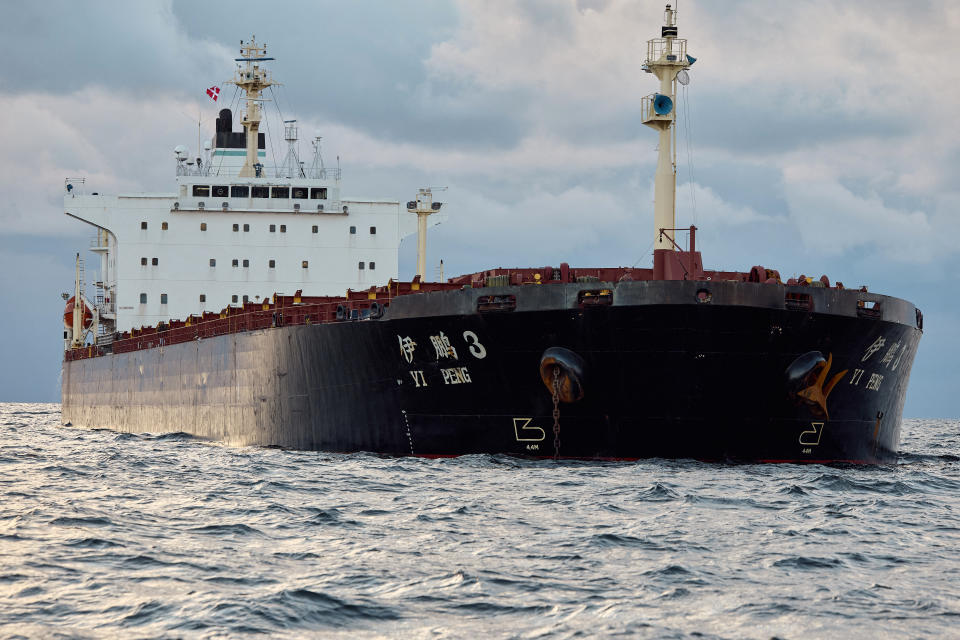Update: The Danish Navy has boarded and detained the Chinese Bulk Carrier Yi Peng 3 in the Danish Straits, near the exit of the Great Belt, according to reports in Eurasia Daily and Defence24. The detention reportedly took place on the evening of November 18. Officials have not verified those reports, however. According to Financial Times sources, Swedish authorities are “carefully studying the Chinese vessel.”
Original Article:
Denmark has sent two ships, the HDMS Hvidbjoernen, an ocean patrol frigate, and the DNK Navy Patrol P525, a smaller patrol craft, to shadow the Chinese Bulk Carrier Yi Peng 3. Authorities suspect the Chinese vessel is connected with the cutting of two undersea internet cables that connect Finland and Sweden to Central Europe, reports MSN.
The undersea cable connecting Sweden to Lithuania was the first to be hit, sustaining damage around Sunday, Nov. 17; the Finland-Germany undersea cable was cut the following day. On Tuesday, the Sweden Ministry of Civil Defense announced that it had recorded the Yi Peng 3’s movements and placed it within the vicinity of possible sabotage events.
According to public records, the bulk carrier left Ust-Luga Anchorage, some 50 miles east of St. Petersburg in Russia, on Nov. 15, and its next destination was Port Said in Egypt. We don’t have any information on her crew or what type of cargo she’s carrying, though.
At the time of writing, Marinetraffic.com puts the Chinese ship in the middle of the Kattegatt, the sea bound by Denmark on the west and Sweden in the east. The smaller Danish patrol ship is immediately beside it, while the Hvidbjoernen is located some 15 to 20 miles southwest of the two vessels (although the website says that this position was last updated more than seven hours ago).
Sweden says that it has already dispatched units to the scene of the cut undersea cables to examine the damage and that its police are already investigating the incident. The action of the Danish ships is likely part of a coordinated effort to determine how and why the undersea cables were cut, especially as authorities are crying sabotage.
This comes just a few months after NATO said that Russia was mapping undersea fiber optic cables as part of its strategy to disrupt communications. While the involved ship is flagged by China, the two countries are, if not exactly allies, at least friendly on friendly terms. Last year, another Chinese cargo ship reportedly dragged an anchor for “hundreds of kilometers,” thus damaging a gas pipeline in the Baltic that connects Finland and Estonia. Finland contends the incident was intentional.
The events in the Baltic Sea regarding the suspected sabotage of the undersea cables are developing, but we hope this does not become a wider conflict. After all, undersea communications cable goes beyond just providing internet to the general people; it could also carry crucial military and government messaging. This is especially important for Finland, which shares a border with Russia, and Lithuania, which is located north of Belarus — the same country from which Putin launched the invasion of Ukraine in 2022.
Source: Tom’s Hardware













No comments.
By submitting a comment you grant Free West Media a perpetual license to reproduce your words and name/web site in attribution. Inappropriate and irrelevant comments will be removed at an admin’s discretion. Your email is used for verification purposes only, it will never be shared.